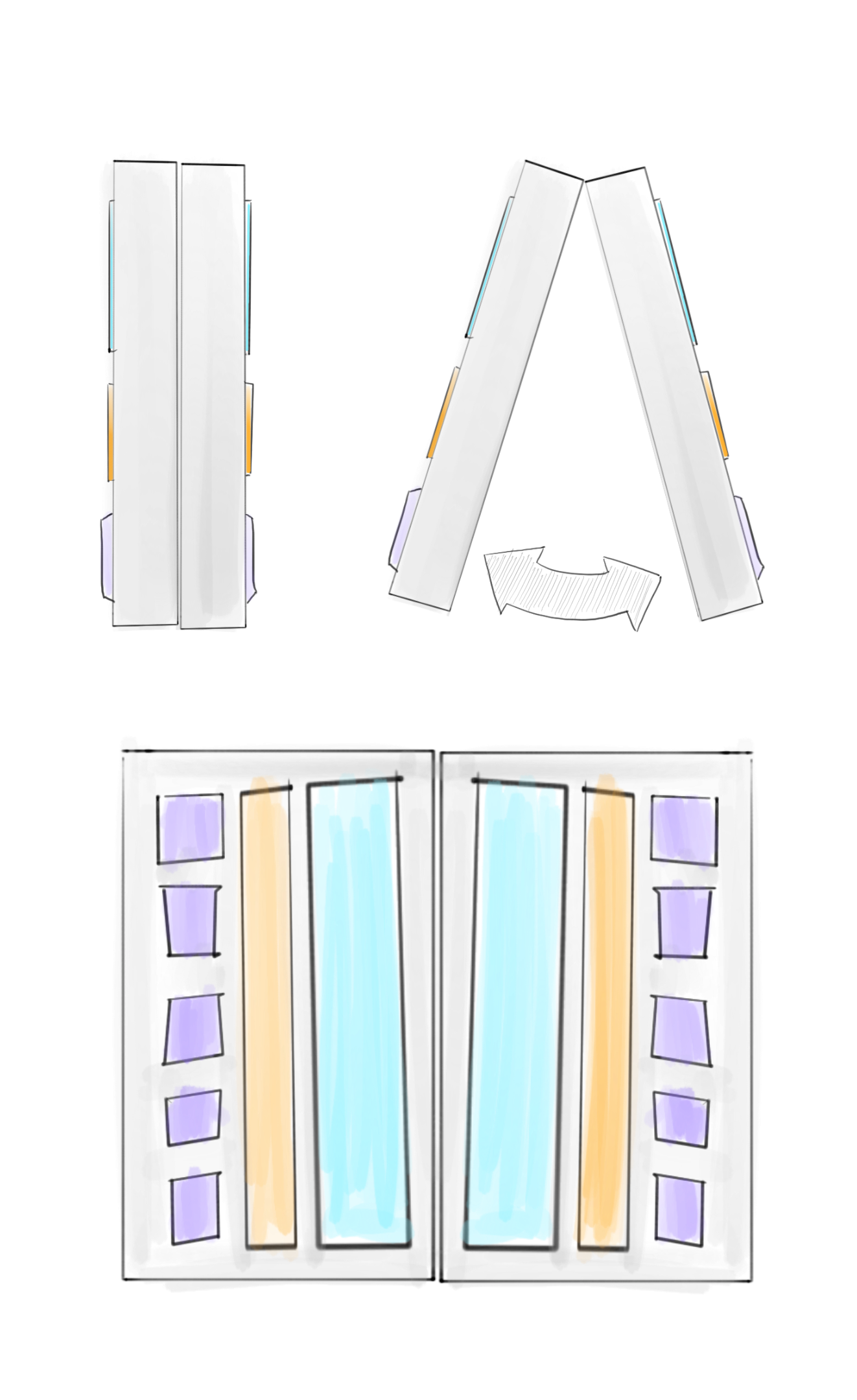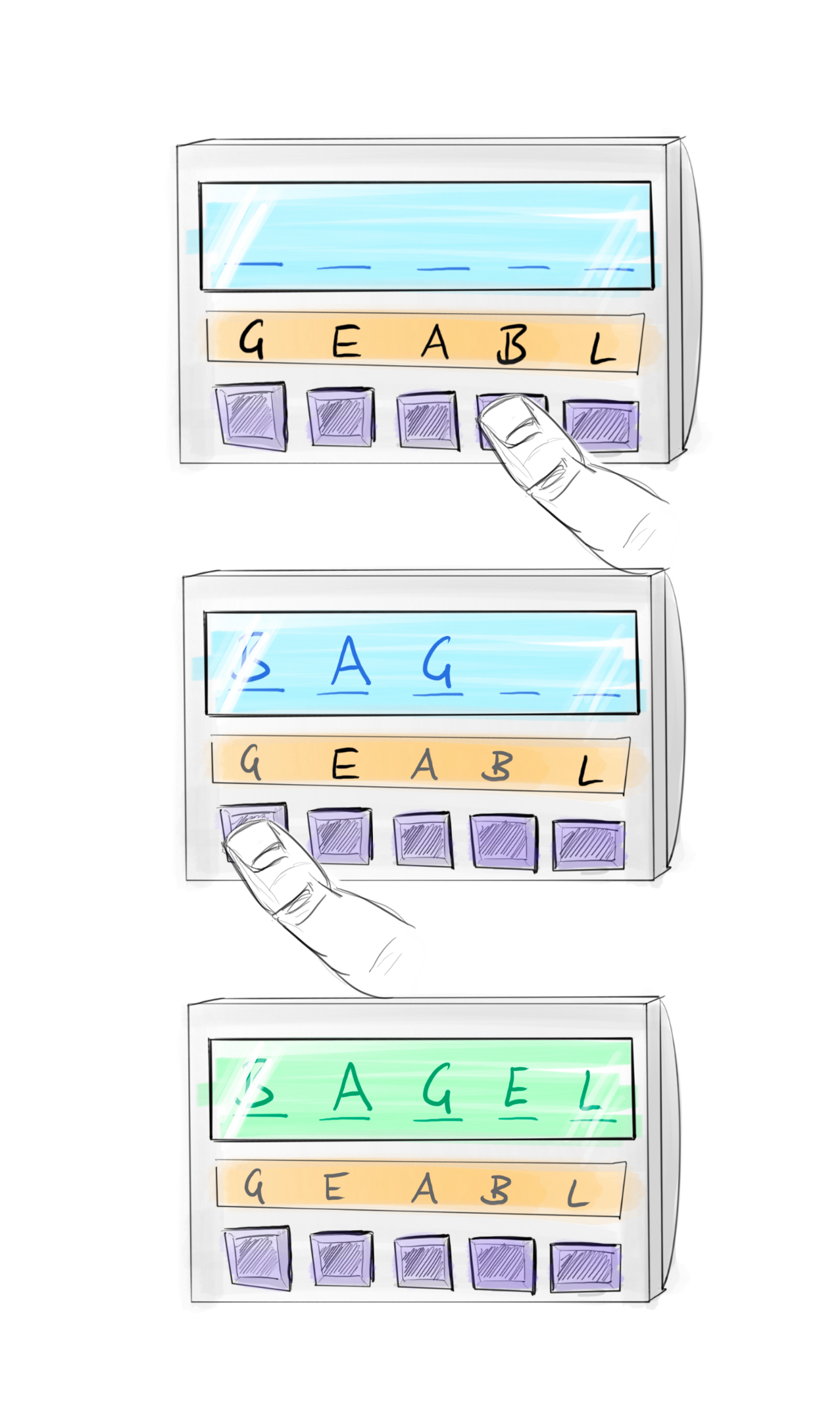
This is a project for a person with a disability, specifically one with vascular dementia, where they are meant to be involved in the decision-making process and prototype testing. The initial plan was to design a product that could support them with their disability, but the co-designer expressed they did not want such a product. It was also difficult for the project group to find an area the case owner struggles with and requires support. Attempts to include care home staff and the spouse were unsuccessful, and language barriers may have contributed to communication issues. The co-designer's enthusiasm was for creating something to help the other residents of the day care. To stay in line with their wishes, the team ideated games that could be used to promote social interaction and mental activity. The concept developed was a word puzzle game with a device featuring dedicated buttons for each of the five letters and a display showing the current input by the player. Eventually, the case owner and care home staff dropped out of the project due to a misunderstanding of the project's purpose.
After the first couple of weeks of the project, several issues have arisen related to developing a product for the individual with disability. Firstly, the purpose of the project has not been clearly established for the co-designer, which may be due to communication issues between the project team and the case owner, as well as inadequate communication on the university’s side beforehand.
Interviews with the co-designer have revealed that they do not need or want a product developed for them related to their disability, further underlining a misunderstanding of what profile was sought after for participating in the project. Attempts were made to include the care home staff and the spouse, yet they did not want to take part in the project for unspecified reasons. The language barrier may have also contributed towards those difficulties, where conversations in Dutch appeared to be more open and engaging.
After further meetings it became apparent that the co-designer had not signed himself up to participate but was included in the project by the day care staff. The enthusiasm the co-designer showed was aimed towards making something that would help the other residents of the day care by inducing more social interaction and participation in the farm's activities. Thus, to keep in line with the wishes and desires of the case owner, exploration in that direction had been made.
To keep in line with the objective of creating something with the co-designer for their personal use, the team came up with the idea of designing a customisable carrying device for transporting the models they build in their free time. It was meant to be adjustable to securely transport them from the workshop location of the day care to the case owners’ home and prevent damages to the models. Unfortunately, that product did not fall within the project specification of creating something related towards supporting someone with their disability.
Conforming to the wishes of the co-designer and the fact that they themselves have no wants or needs of a product being designed specifically for them. But would rather like to create something which supports the community at the day care to stay mentally and socially active, the team ideated on games that could be used in that situation.
The following ideation resulted in a game concept which revolved around connecting the separated locations (buildings) on the farm grounds, specifically the workshop and café area. The goal of the game was to promote social interaction through a ‘call to action’ device, which would invite users to play in a non-intrusive way and without the help of a staff member.
The core of the concept was based on popular word puzzles, like Scrabble, Wordl and Crosswords. Players would be given five letters at random, which would form a word if placed in the correct order. After finding a word, five new letters would be provided, and the process repeats until a timer runs out. The game could be played cooperatively as well as competitively with a winner determined by the number of words guessed correctly in an interval.
The device itself (see images on the right) would feature dedicated buttons for each of the five letters and a display showing the current input by the player. The concept would be a foldable controller featuring two identical sides meant to bring people together. Each device would have a docking station in its dedicated area (e.g., café or workshop). If a controller gets picked up the other docking station would invite nearby users with lights and sounds to join the game.
This idea was close to the case owners own desire since they were aware of their condition and the necessity of keeping themselves mentally active to hinder the progression of the condition. Furthermore, they spend a lot of time at the workshop location and would like to promote interaction there, so more people would take the opportunities given.
To inform the co-designer about the current progress made and press the importance of his feedback for the project, the group decided to create a roadmap for the case owner with all the necessary information regarding the concepts as well as a rundown of the schedule for the coming weeks. Furthermore, a letter addressed at them explaining the situation of having to create a product that supports them with their disability personally has been sent out to ensure the project scope was well understood. They were tasked with filling out a heatmap, keeping a journal and providing feedback on the concept direction. Additionally, a questionnaire for the staff was included which was aimed to gain information about the case owner from a different perspective.
At this stage, the case owner and care home staff decided to drop out of the project. The reason for this included that the expectations from the staff differed from what the purpose of the project was. After a full understanding was established, they decided that the time constraints and their structured daily routine (which would have been disturbed by the proposed concept) did not allow them to continue with the project.
This meant for the group to shift its objective from creating a product that supports someone with a disability to reflecting on the experience and coming up with a product that could help in those new to co-designing situations – a method of promoting interaction at the start of a collective project and getting to know each other’s interests, values, and morals.
To address these issues, the team discovered that it is important to take a more curious and engaged approach to communicating with the co-designer, as well as to work on establishing a clear purpose and direction for the project.


